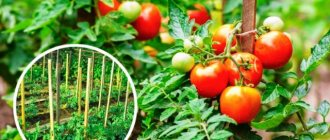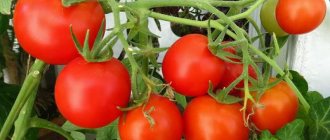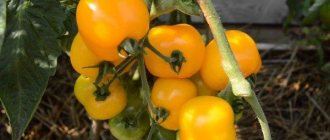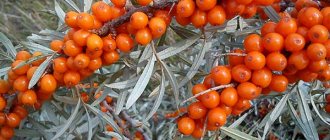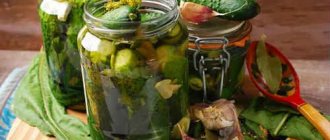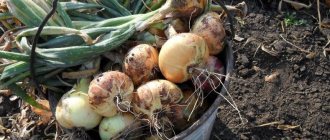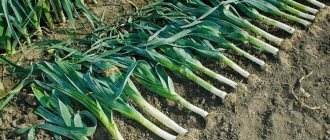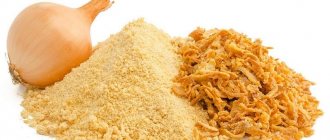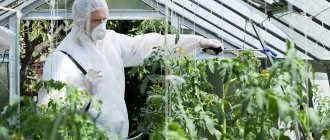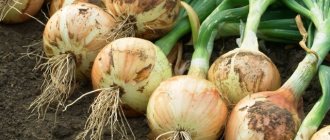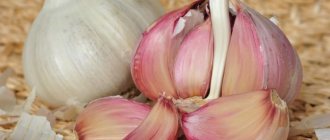When and how to remove onions from the beds?
In order for the onions to dry well, it is recommended to follow the rules. 14–15 days before the expected harvest, you need to stop watering the plants. At night, it is recommended to cover the plantings with film to protect them from morning dew.
The onion harvest is harvested around the end of July, beginning of August. Vegetables grown from sets begin to be harvested a little earlier than those grown from seedlings. External signs will help determine the degree of maturity of the head. Feathers usually begin to turn yellow, dry out and spread along the ground, the neck becomes thinner and dries. The bulb has a characteristic golden yellow color, the husk is dry, rustles and is easy to clean.
Digging up the bulbs should be done using a fork or shovel. At a short distance from the head, they dig up the ground and then pull it out with their hands. If you pull out the onion by hand, you can damage the bottom, which will lead to early rotting.
It is advisable to harvest on a warm, sunny, dry day. It is better to dry vegetables in the sun rather than in the shade. The sun's rays and wind dry well to the very center of the bulb, and disinfection occurs at the same time. First, you need to carefully shake off the adhering dirt from the heads, but do not hit them against each other. Lay out the bulbs in one layer, periodically turning them with different sides to the sun.
If it rains every day, then a few days before harvesting you can cover the bed with film. The harvested crop is immediately removed to a room with good ventilation.
Timing and technology of cleaning
Only those onions that are stored on time are stored for a long time . If you dig it up early, the too thick and juicy neck of the bulb will take a long time to dry, which will increase the risk of rot and fungal diseases.
If you delay harvesting, the bulbs will become overripe and the upper scales will crack . This in turn will lead to rapid deterioration of the product during storage. Overripe onions develop a secondary root system, which worsens the taste of the turnip.
When to dig? Turnips are removed from the beds after the feathers wither. If 60-80% of the leaves have fallen, it’s time to start harvesting. On average, this time falls in the second half or end of August.
Need to know! The onion is removed after the feather has been laid down. At this time, the growth of the heads stops, and the maximum amount of nutrients accumulates in them.
Another sign of a ripened vegetable is the formed cover leaves, which have acquired a color characteristic of the variety.
A timely harvest is the key to successful storage . If you start harvesting onions earlier, when the feathers have not yet died, the neck of the onion will be too thick and juicy - this increases the risk of rotting of the bulbs.
Helpful advice . If the time for harvesting has already come, and the feather has not yet died, then the ripening of the bulbs can be accelerated. To do this, it is enough to cut the roots with a sharp shovel at a depth of about 5 cm. This way you will reduce the nutrition of the plants and speed up ripening.
Harvest
Digging is carried out in dry, sunny weather . It is advisable that there is no rain 1-2 weeks before harvesting. Then the earth will dry out and the collected heads will not have to dry for a long time.
If the soil is light and loose, the onion is simply pulled out of the ground. But if the soil is dense and heavy, the bulbs are dug up. Otherwise, most of the pulled out heads will remain without bottoms and will rot in a few weeks.
It is more convenient to dig up the crop with a small pitchfork . They are stuck into the rows at a short distance from the bulbs and the layer of soil is slightly raised.
In order for onions to be stored for several months after harvesting, they are dried before storing them.
The influence of grade on harvesting time and shelf life
Depending on the variety and growing conditions, the growing season of onions lasts on average from 65 to 85 days. Early varieties ripen by the end of July, and later varieties are ready for harvesting in late August - early September.
Attention! Only late and spicy varieties are suitable for winter storage. The remaining varieties are used for preparations or eaten immediately after collection.
Leeks are dug up later than turnips . Harvesting begins in mid-September - early October (grown leeks are not afraid of the first frosts). To make the onions whiter, 10-14 days before removal from the garden, the lower part of the plants is sprinkled with earth or covered with light-proof material. After digging, the roots and leaves are cut off.
Harvesting of shallots begins from the end of July to mid-August . As in the case of turnips, delaying harvesting leads to the germination of the bulbs and the appearance of new roots. Shallot nests are dug up, divided into bulbs and dried.
Sevok
The seedlings are put away for storage in order to plant them next year. Onion sets need to be dried for at least a month. For the first week, if the weather permits, it is better to dry it outside, on the floor in the sun. The seedlings are stirred periodically so that light and air reach each area. If the weather is damp, then the seeds are distributed on fabric or paper in a room with good fresh air circulation.
When the neck is completely dry and golden, dry scales appear, you can harvest the crop in storage containers. Damaged and small onions are removed to the side. The size of the planting material should be approximately 2 cm in diameter.
See also
Planting and caring for green onions, their diseases and their treatmentRead
It is allowed to store in cardboard boxes, nets or fabric bags, hanging from the ceiling. Periodically, the bulbs are sorted and suspicious heads are selected (the presence of spots, an unpleasant odor, softening of the head should alert you). In order for the seed to have the ability to germinate after planting, it must be stored at a temperature of at least +16 degrees.
Sevok can also be stored cold. In this case, it is stored in the refrigerator or basement at a temperature of -2 degrees. The vegetable must first be heated at a temperature of +30 degrees for two weeks. Before planting, the seedlings are warmed up again.
Possible problems
Even if onions are stored according to all the rules, you should be aware of the problems that may lie in wait for stocks:
- The most harmful disease of onions during storage is gray neck rot, softening and rotting of tissues in the upper part of the onion;
- The disease begins to appear 2 months after storing the product. It spreads very quickly;
- The manifestation of the disease is small black sclerotia of the pathogenic fungus under the dry scales of the bulbs. Affected bulbs can be used for forcing in water onto feathers;
- High-quality drying of onions at a temperature of about 30 degrees prevents the development of neck rot.
Share this article with your friends on social media. networks:
Onion
There are some peculiarities and how to properly dry onions after harvesting. Onions need two weeks to dry out. For the first two days, they are left to dry in the garden bed, and then transferred to a dry, ventilated room, where the air temperature is about +25 degrees.
In a well-dried onion, the neck becomes thinner, dries out, and the head becomes covered with dense, rustling, golden scales. The bulbs feel dense to the touch and smell pleasant. Before putting them in a storage container, you need to cut off the feathers, leaving a stump of 3–4 cm. If you plan to weave braids from them, then leave a length of about 10 cm.
For storage, only whole, dense, undamaged heads are selected, which can be placed in boxes, drawers, baskets, and nets. The crop is best stored in a dark, cool place with good ventilation.
Storage rules
It is important to know about the nuances of storing vegetables in fresh and dried form.
Storing dried onions
The dried seasoning is stored in containers with lids . It is preferable to use lids with perforations for air access. If there is no special lid, use parchment paper or thick cloth, securing it to the neck of the glass container.
Linen bags and paper bags are also suitable for storage . It is important that they are not exposed to moisture during storage.
Storing fresh onions
It is convenient to store dried onions from the garden in boxes or cardboard boxes . A small amount of vegetables is poured into each box, in one layer of 25-30 cm. Holes are made in the side walls of the box for air access.
Also, canvas bags are used to store the bulbs; they are placed in a dry, ventilated place.
Another time-tested storage method is braiding the heads . Braided chains are not only well ventilated (and therefore the onions in them are less susceptible to rotting), but can also decorate the kitchen.
It is better to store onions at a temperature of 0 to 5°C . However, the heads will last 1-2 months at room temperature.
Leeks are stored in a cellar or basement, sprinkled with sand.
Shelf life
The dried vegetable is stored in a dark, dry place without foreign odors . The shelf life of dried seasoning is about one year.
Dried bulbs from the garden should be firm to the touch and have several dry, dense outer scales. The neck of each head should be tightly closed (there are no voids or succulent leaves on the cut).
If storage conditions are met (temperature from 0 to 5°C and humidity 50-60%), healthy dried heads are stored for several months.
How to dry nigella?
Onion seeds are called nigella, and the better they are dried, the more likely it is that all the beneficial properties will be preserved. Vegetable growers advise drying nigella in three stages using home heating devices:
- for the first 7 days after the onion is kept indoors at a temperature of +20 degrees;
- The vegetable is dried for another 7 days at +30 degrees;
- During the entire third week, the bulbs are dried at +35 degrees.
After drying, the nigella is placed in boxes or bags and stored in a cool place. The air temperature should not exceed +18 degrees. Do not forget to review the harvested crop, selecting rotten bulbs in a timely manner.
How to dry onions for the winter at home?
There are many ways to dry onions at home using household appliances or outside. Before drying, turnips are cut into slices. The cutting thickness should be about 4–5 mm, otherwise it will not dry out. Chopped pieces of onion, dried for storage, are poured into containers (jars, boxes, boxes are suitable) and put in a cool place.
In the oven
A good way to dry onions after harvesting is using the oven. Line a baking tray with baking paper and lay out the sliced rings in one layer. The oven is heated to 60 degrees and a baking sheet with slices is placed in it. There is no need to close the oven door. The drying procedure lasts approximately 6 hours. All this time, the onion rings are periodically turned over so that they do not darken or burn.
See also
Proportions and rules for watering onions with salt to prevent onion fliesRead
As soon as the rings are completely dry, the cooled product is transferred to linen bags, cardboard boxes or a glass jar. The main thing is that air does not penetrate into the container. During the first few days, it is better not to close the container; the dry slices will completely dry out during this time. Only after this the containers are closed and stored in a dry, dark, cool place.
In a convection oven
Using an air fryer you can cook any dish. The hot air flow allows you to fry, stew, bake, smoke. There is another useful function - drying. Kitchen equipment can be used not only for drying onions, but also for mushrooms, fruits, berries, and herbs. During drying, the beautiful appearance, pleasant taste and healthy components are preserved.
The air fryer consists of a lid and a heat-resistant glass bowl. During operation, the spiral heats up, air constantly circulates inside and, as a result, the onion rings are dried evenly.
In an air fryer, onions can dry in just one hour at a temperature of about 70 degrees, but only when you place not a whole onion, but chopped slices. To ensure that the rings are well and efficiently dried, the lid must be kept slightly open.
Benefits of dried seasoning
Since dried onions retain the entire set of useful components listed above, its effect on the body is manifested in the following positive actions:
- strengthens the immune system;
- stabilizes blood pressure;
- thins and removes mucus;
- has a weak laxative effect;
- helps with various types of vitamin deficiency;
- promotes the removal of excess fluid;
- normalizes blood circulation;
- improves digestion;
- stimulates the production of liver secretions.
The presence of small portions of dried onions will have a beneficial effect on the functioning of the entire body and will become an effective preventative against colds.
On air
Onions cut into small slices can also be dried in the air, in the shade. The spicy vegetable is laid out in a thin layer on any surface, for example, cardboard. The rings are turned over daily to dry evenly. This drying method is suitable if the weather is dry and warm.
If the weather is good, then the onions can be dried as a whole, spread out in one layer on a fabric surface directly on the street. In case of cold, rainy weather, it can be stored in a well-ventilated area, such as a barn or hayloft (it is better to keep the door ajar).
Experienced vegetable growers at their dacha make special devices for drying onions with their own hands. If the barn is built in such a way that there is a canopy, you can attach shelves made of blocks to its wall. Such bulbs will not be wet by rain, and air will flow to the vegetable around the clock.
How to properly dry onions immediately after harvesting
It is possible to properly dry onions only if they are fully ripe in the garden and have not sat out. In an unripe vegetable, the neck will remain wide, and pathogenic microorganisms will easily penetrate into the bulb through it. And the one that has stood still will come out of the dormant period and begin to grow roots again. Such a disruption in the crop's vegetation cycle will not lead to good shelf life.
Ripe onions have the following characteristics:
- the vegetable stops producing new leaves;
- the feather lies down and shifts just above the neck;
- the upper covering scales on the bulb acquire a color characteristic of the variety.
Two weeks before the expected harvest, stop watering the onions and lightly rake the soil away from the bulbs.
A sunny day is chosen for harvesting. Lightly dig up the onion with a pitchfork and pull it out of the ground by the stems. Shake off the soil from the roots with your hands, trying not to expose them to shock, and lay them out to dry directly on the garden bed or any other sunny place without stagnant air.
At night, the spread crop is covered with polyethylene, burlap or tarpaulin so that it is not covered with dew in the morning. Drying in the sun allows you to significantly reduce humidity in a short time and at the same time disinfect the vegetable. Then the onions are dried in the shade, in a warm, well-ventilated place. The attic is great for this. The harvest is laid out in a thin layer on racks and turned from time to time to dry evenly.
Onions are considered well dried according to the following characteristics:
- the neck has narrowed and dried out;
- the leaves have dried to a rustling state;
- the roots have turned into thin dry threads;
- the integumentary scales are fully formed and cover the bulb completely.
Onions that are damaged, rotten or have other signs of deterioration are sorted out and set aside separately. This type of onion is not stored for long; it must be used first. Some of it is consumed fresh, canned together with vegetables, and some can be dried.
The rest of the onions for storage are braided or poured into boxes, after cutting off the tops, and stored in a cool, dry place.

